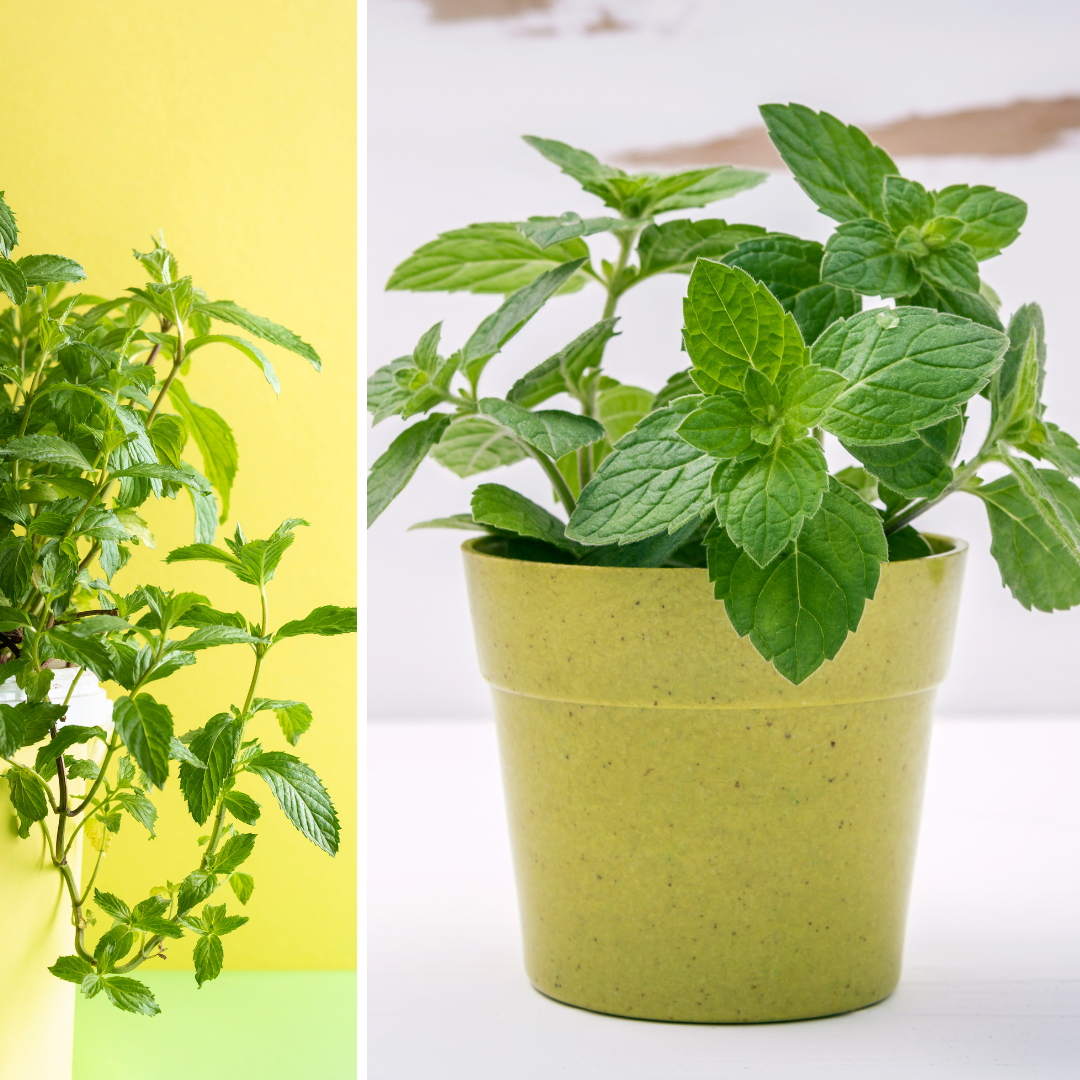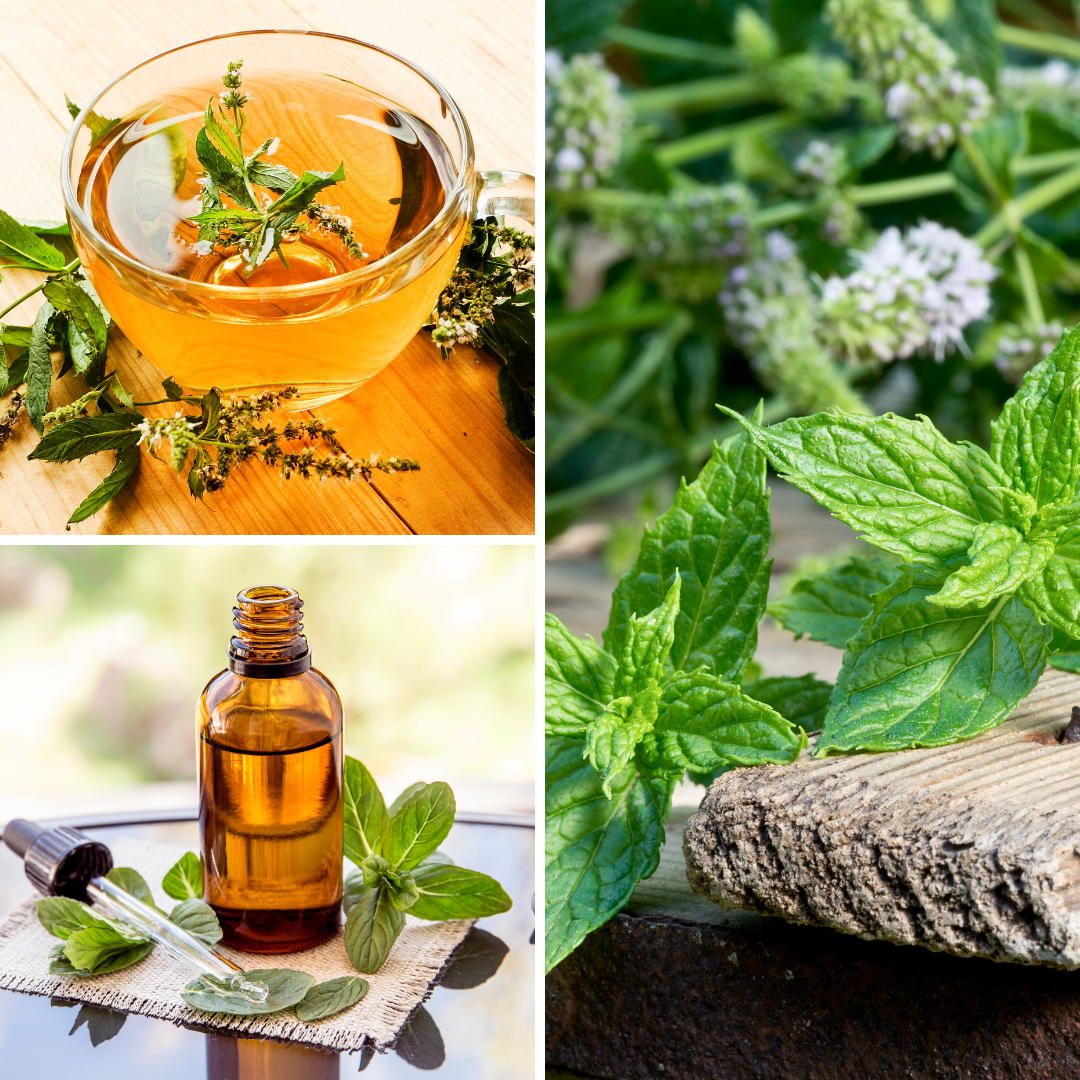
I have been back in Mississippi and growing a garden here again for a little over a year, and I have been reminded of an essential truth about gardening in Mississippi: Plant things in Mississippi that will endure the heat and humidity here:
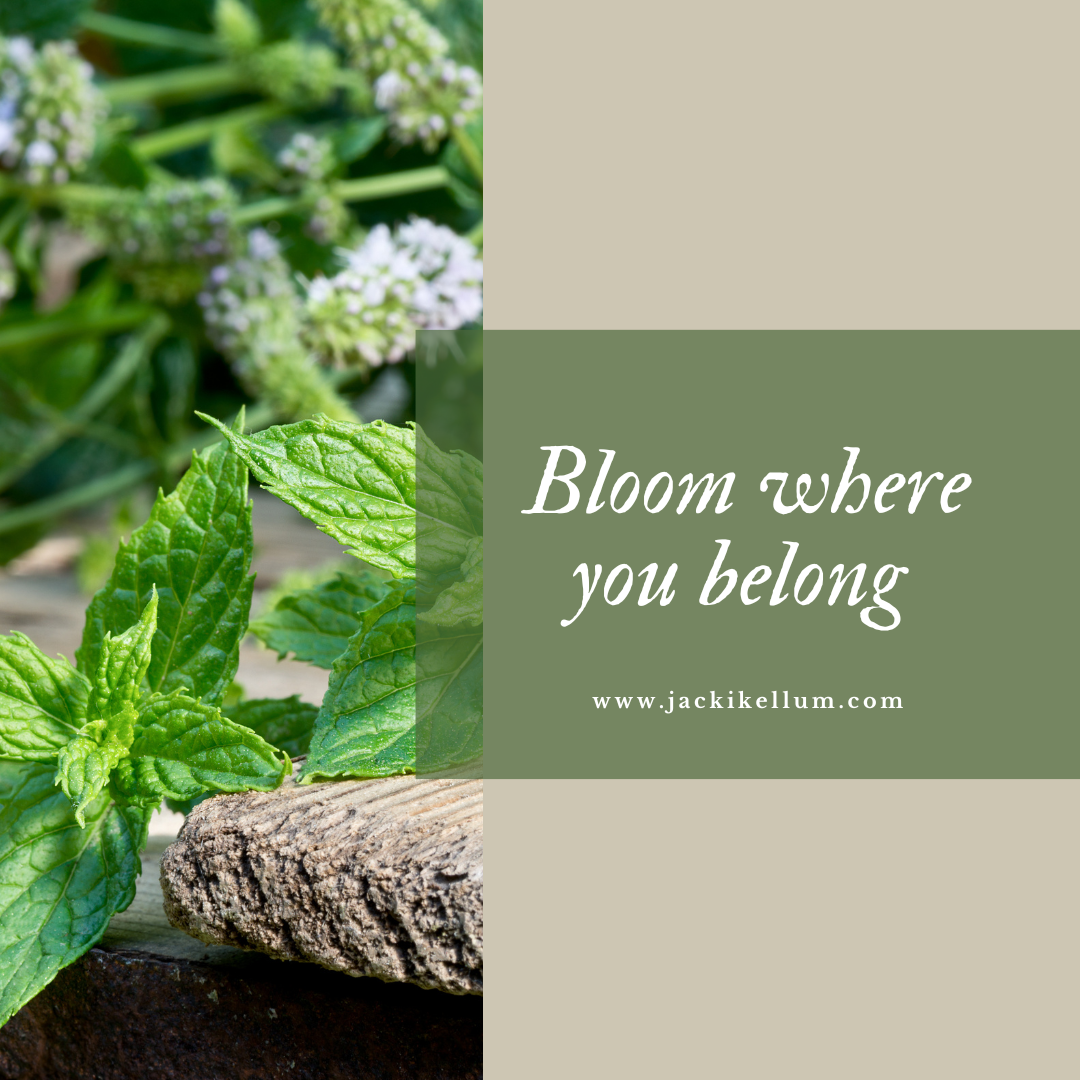
This morning, I went out to my front garden, and I discovered a glorious sight that has almost grown itself. You see, I have been busy creating a garden from a field of Bermuda grass in my backyard, and I have had litte time to focus on my front garden.
When I moved here, nothing was growing in my front flower bed but a rue plant and a few struggling sprigs of peppermint.
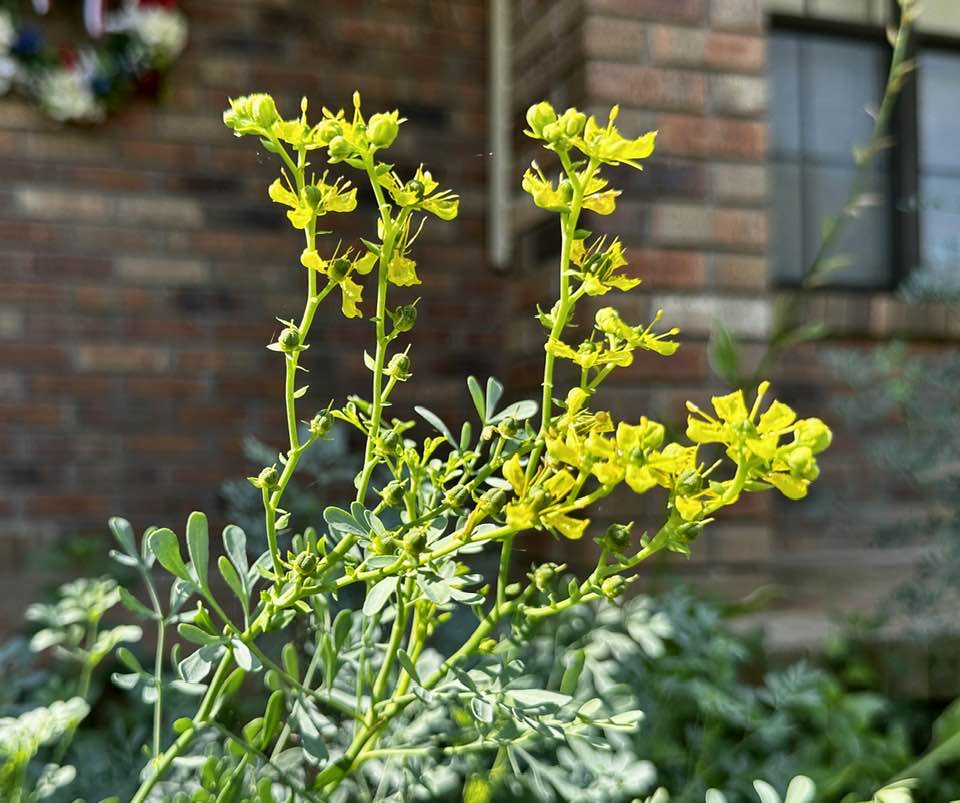
Rue growing in my garden on July 4, 2023.
Apparently, Rue and Peppermint are the only plants that the former occupants of my house grew. Both Rue and Mint are Imortant Ingredients in Arab cuisine, and an Arab family lived in this house before I moved here. On July 4, 2023, I wrote the following about my straggling rue plant: “Rue is a an old, Biblical-times plant that was essential at that time and in that area. In the USA, it has seemingly lost favor among gardeners, but the former occupants of this house moved here from the Bible Lands. I’m researching this plant now, and if for no other reason, I’ll grow more of it because it is a host plant for the swallowtail butterflies–Black Swallowtail and the Giant Swallowtail and others. Both the Black Swallowtail and the Giant Swallowtail are in Mississippi.”

By September 19, 2023, I discovered at least 40 caterpillars munching on the rue in my front yard. Not long after that, Swallowtail Butterflies were fluttering all over my garden. I immediately tried to propagate my rue and move some of it to my back garden, but the rue did not like that. It liked the front flower bed, and what I didn’t destroy, trying to move it, has been blooming there again all this summer.
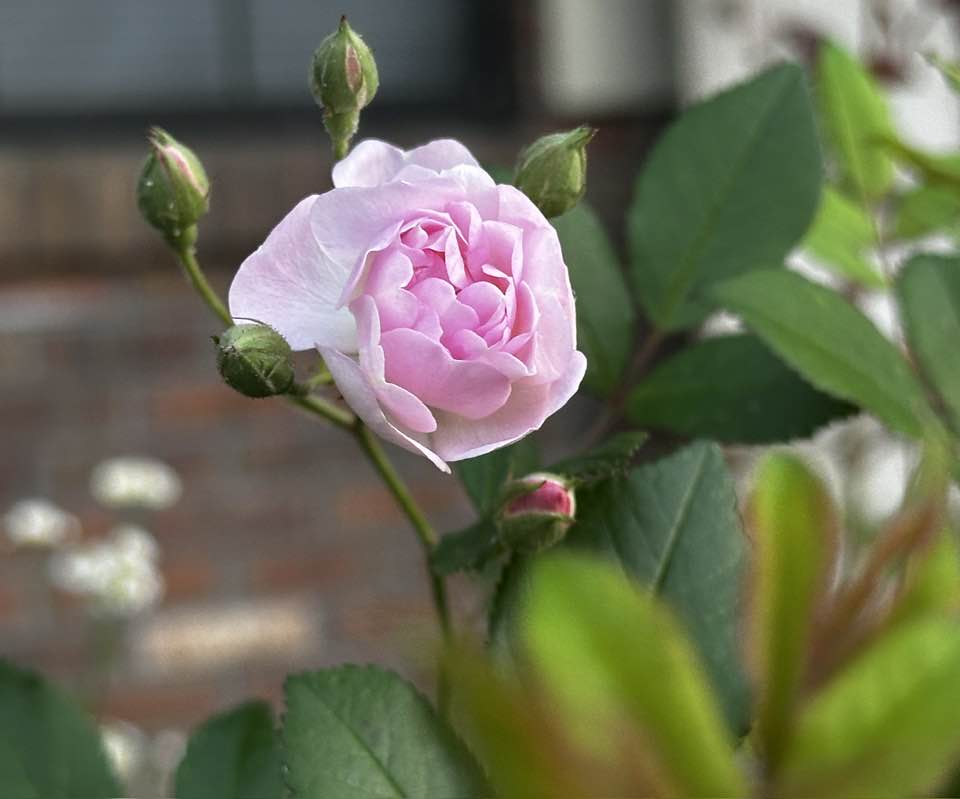
The Fairy Rose in Jacki Kellum Garden – Enlarged Detail
April 21, 2024
When I moved here last year, the front flower bed was the only space prepared to plant ANYTHING, and I planted a couple of Fairy Roses that I brought with me. They have flourished, and today, the peppermint has spread into a lovely mass beneath the arching Fairy Roses:
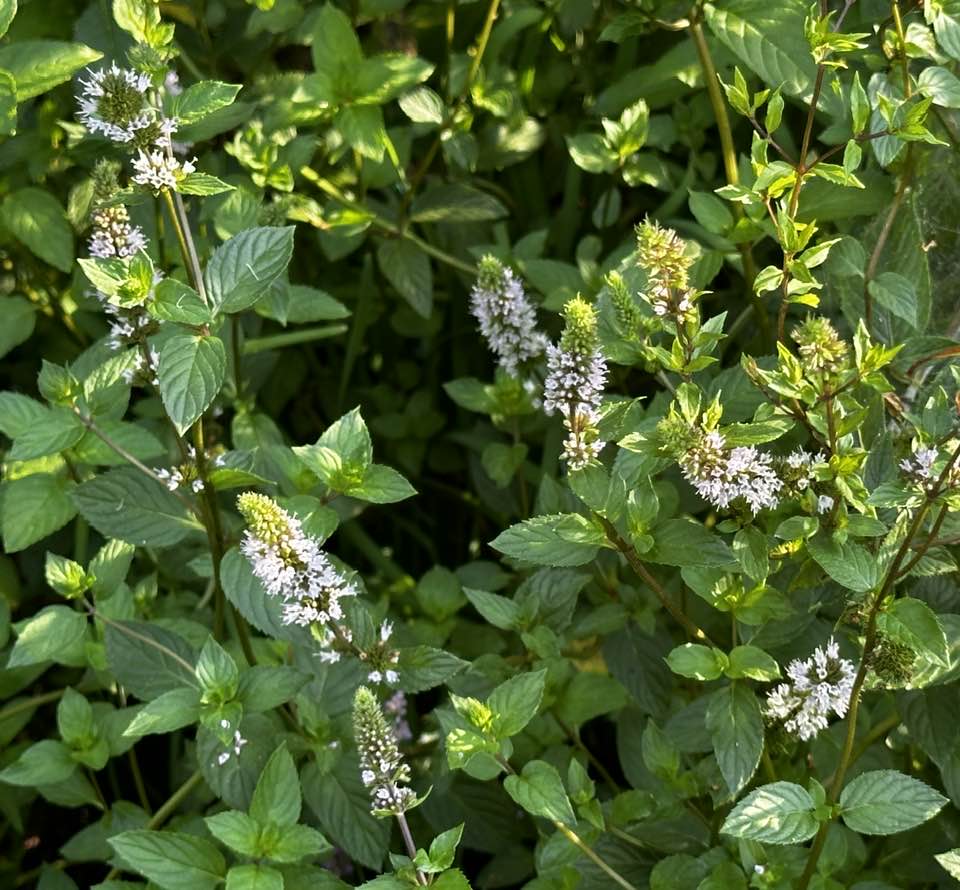
Peppermint Growing in Jacki Kellum’s Garden August 6, 2019
The Fairy Roses have been blooming all summer, and the Pepperinnt has begun to bloom now, too. This garden bed is extremely fragrant now. It occurred to me that this must be the best time to harvest peppermint for oil. I checked with Google and discovered that the best time to harvest peppermint is when the plants are only 10% in bloom.
Today’s Project Is To Harvest Peppermint Leaves to Make Peppermint Oil and Peppermint Salve.

.Recipe: How to Make Peppermint Oil from Fresh Herbs
1. Crush or muddle fresh peppermint leaves in a glass jar with a tight lid.
2. Cover the leaves with olive or grapeseed oil. Close the jar and shake.
3. Store for three days. Strain into a bowl and discard the leaves.
4. Pack the jar with fresh leaves, pour the oil back in the jar and cover with fresh oil. Repeat until you have the desired amount.
“Twenty drops of the oil should be diluted with 1.5 ounces of another oil — coconut or almond, for example — before using it topically, and with water (1 cup per five to 10 drops of oil) for mouthwash. Never put essential oils directly on your skin (they can burn).” LA Times
Recipe: How to Make Peppermint Salve from Fresh Herbs
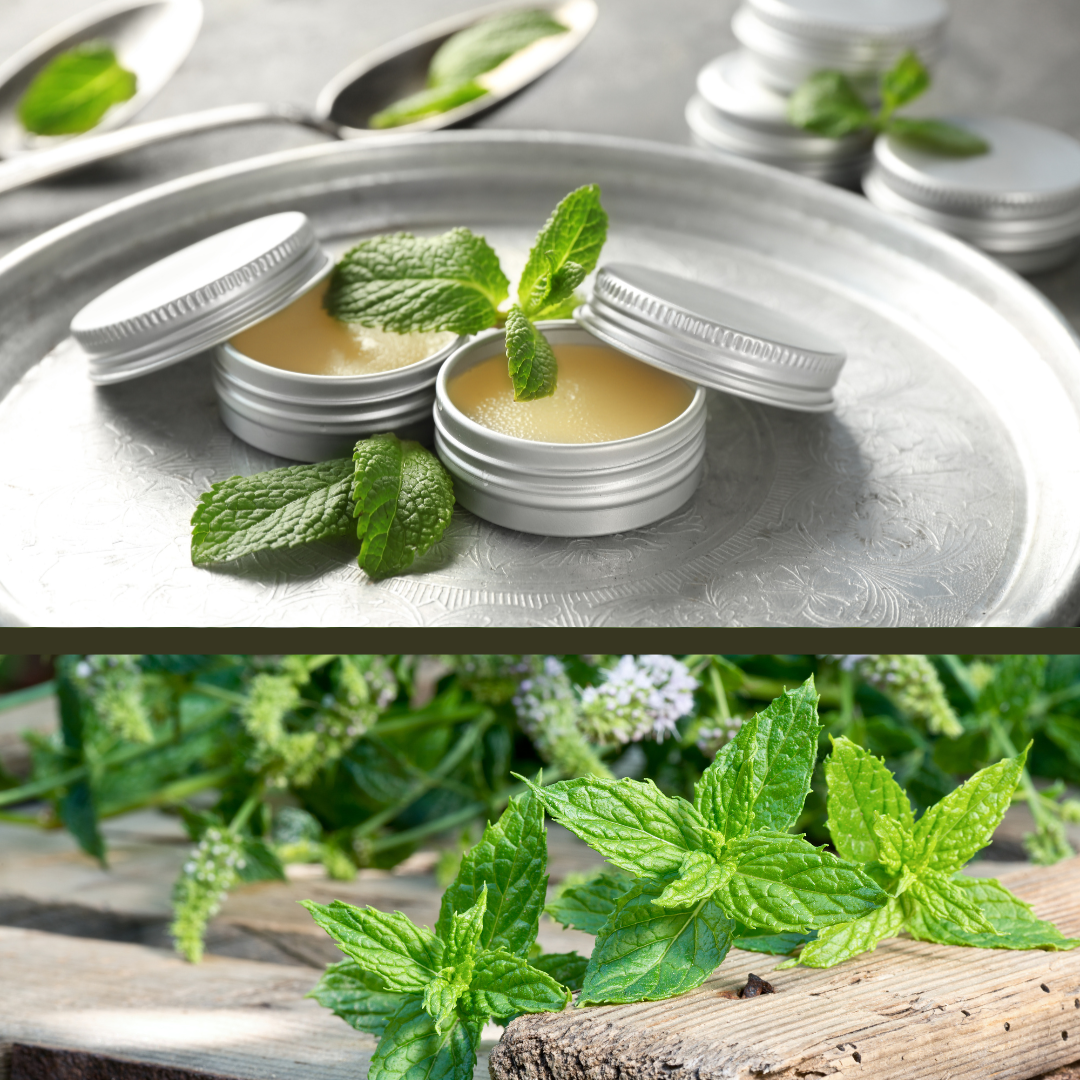
-
1. Infuse the oil“Chop fresh peppermint leaves and place them in a jar halfway full. Cover the leaves with oil, such as olive, grapeseed, or vegetable oil. You can also use a carrier oil, such as almond oil. Warm the oil in a crock pot or pot on low heat, or use a double boiler, and infuse the leaves for 3–6 hours, or overnight. Strain the leaves out with cheesecloth.
-
2. Melt the beeswax“In a mason jar placed inside a pot of boiling water, melt beeswax pellets or grated beeswax.
-
3. Combine the ingredients“While the beeswax is still warm, you can add other ingredients like essential oils, fractionated coconut oil, or vitamin E oil. Stir everything together thoroughly.
-
4. Pour and store“Pour the mixture into jars or tins, and let it cool and solidify. Once it’s set, you can label and store the salve.” Google ai
Health Benefits of Peppermint
“Peppermint (Mentha piperita) has been used for thousands of years for its health benefits. It’s a cross between water mint and spearmint, and contains menthol, which is its active ingredient. Peppermint has a calming and numbing effect, and can be used to treat many conditions, including:
-
Digestive issues“Peppermint can help with an upset stomach, indigestion, irritable bowel syndrome (IBS), gas, bloating, and bowel movements. Peppermint oil capsules can help with IBS symptoms like constipation and diarrhea.
-
Headaches“Peppermint can help with tension headaches and migraine pain.
-
Skin irritation“Peppermint can reduce itchiness, redness, and cracked skin. Peppermint oil can be applied topically to the skin for headaches, muscle aches, and joint pain. Before applying peppermint oil to the skin, dilute a few drops with mineral or olive oil and test it on a small area first. You should also check with your health care provider before applying peppermint oil to the skin, as it’s not recommended for people with diabetes, gastroesophageal reflux disease, or a hiatus hernia. Peppermint oil may also interfere with some medications.
Peppermint Repels Fruit Flies
“…dried peppermint can help repel fruit flies because they dislike the smell of peppermint. You can hang dried peppermint in muslin sacks or paper tea bags around your home. You can also try grinding up the peppermint or using peppermint essential oils in a diffuser. Mint plants can also be grown indoors or outdoors to help keep fruit flies away.” Google ai
Grow Peppermint Inside to Repel Fruit Flies
“While most find the scent of peppermint to be delightfully refreshing, not so for fruit flies. It is an odor that makes them turn around and fly away!
“Mint is very easy to grow both indoors and outside. In fact, know that in the presence of sunny conditions with moist, well-draining soil, it will arrogantly take over not only where planted but surrounding areas — and I mean quickly! Your best bet is to plant mint in containers, then trim it back as needed to create lush, beautiful foliage.” syracuse.com
While delicious when added to iced tea and other beverages, mint is toxic to both cats and dogs, so avoid this plant if you have curious pets running around.
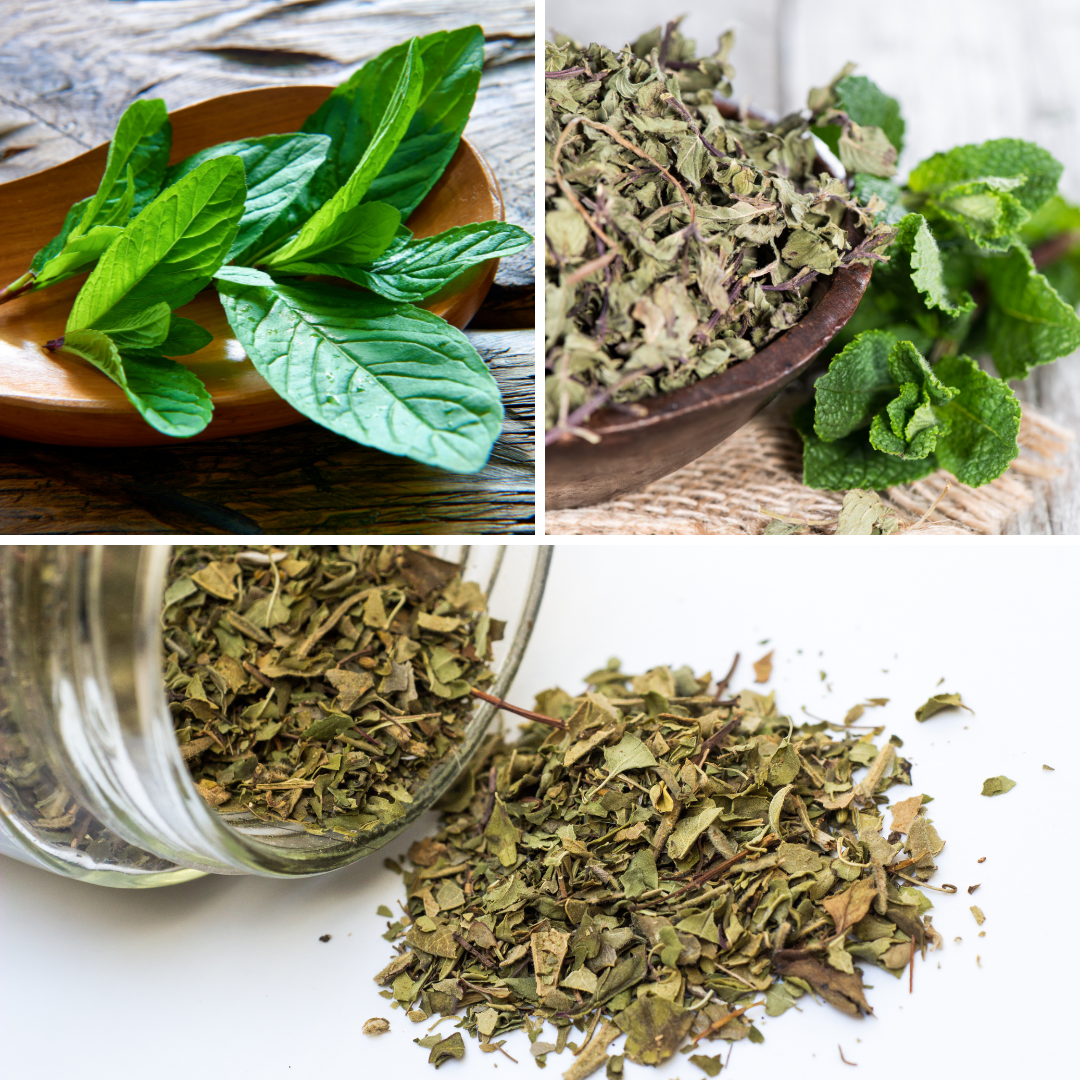
Recipe Peppermint Potpourri
from Grit
1 cup of cellulose fiber fixative (or orris root) to hold the scent
10 – 15 drops of peppermint oil
3 – 4 cups of dried mint leaves
1 cup of broken cinnamon sticks
1. Spread fresh mint on newspapers or paper towels to dry. (Make sure it is crispy dry before using it.)
2. About a week before mixing the potpourri, put peppermint oil on the cellulose fiber and place the mixture in a glass jar with a lid. Shake occasionally to distribute the scent.
3. When the mint leaves have dried and the oil has soaked into the fiber fixative, combine the mint, cinnamon sticks and cellulose fiber fixative. Mix well. If the scent is not strong enough, add a few more drops of peppermint oil.
4. Place in an open container or in a simmer pot. Recipe from Grit

Now, back to my original thought: “Bloom Where You Belong:
Apparently, my Peppermint and my Fairy Roses are delighted where they are currently living, but I have a fragrance garden project in my backyard, and I want a profusions of both of these plants back there, too.
In the above video, I talk about my effort to grow lavender in my Mississippi garden, and I am ready to pronounce the following:
I AM DONE with Trying to Grow Lavender in Mississippi
As I’ve watched the peppermint in my front garden bed begin to bloom, I’ve come to the realization that blooming peppermint is pretty, too. True, peppermint doesn’t smell like lavender, but to be fair: lavender doesn’t smell like peppermint either, and:
Peppermint Wants to Grow in My Mississippi Garden. It belongs in my Mississippi Garden — and Lavender apparently does not.
There is a Valuable Lesson in this Story: People Need to Live Where They Belong, Too. Forget the Fantasy “Bloom Where You’re Planted. Plant Yourself Where You Belong.
That’s Where You Will Bloom.
But that is fodder for another day–another post–another book.
Discover more from Jacki Kellum
Subscribe to get the latest posts sent to your email.
